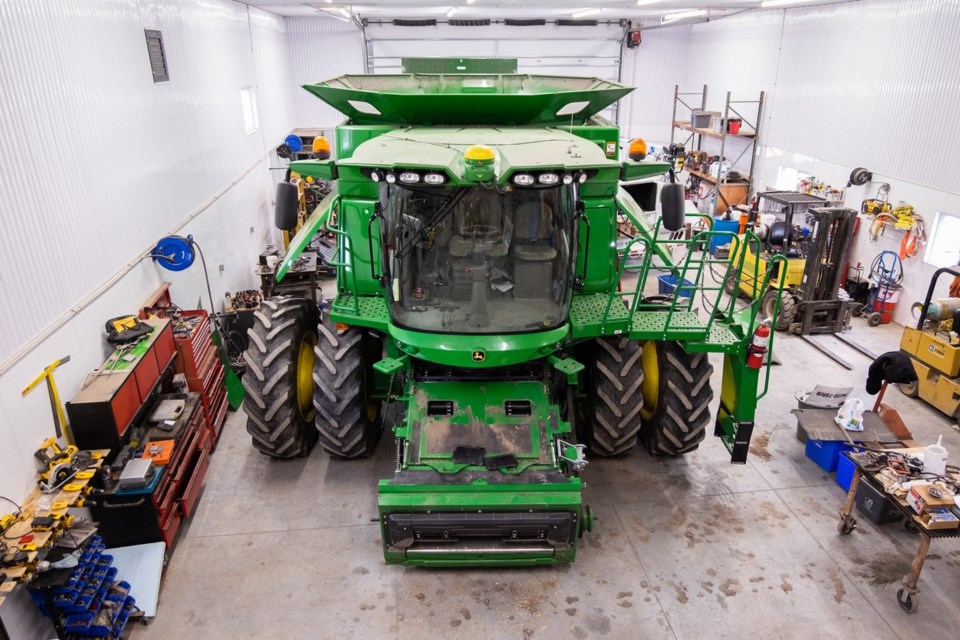Since steam-powered threshing machines replaced hand-swung flails into the first Industrial Revolution, farm harvesting equipment has come a long way.
Modern hulking John Deere harvesters are jammed to the brim with hydraulics and able to process a phenomenal amount of crop — advances that farm labourers in the 1800s couldn’t even begin to fathom.
But what has really revolutionized modern farming is the GPS.
“Basically you stuck an antenna on your tractor, you had a light bar on the window and if your light wasn’t centred, you’d just turn until that light comes back to centre and you follow the row all the way down,” Jonathan Aarts said recently, standing in the shadow of a towering John Deere S660 combine harvester.
That was nearly 20 years ago. Today, it’s a matter of sitting down, and turning on what equates to autopilot for farmers — the combines can literally steer themselves through a field.
Together with his father, Lenny Aarts, Jonathan works over 3,000 acres of cash crops in the Wainfleet area and manages the fleet of harvesters, planters and sprayers.
Jonathan jokingly (or not so jokingly) says he’s unsure if he could steer a straight row without the help of GPS these days. “You get kinda spoiled,” he said.
Inside of the S660’s cab are screens and panels of buttons reminiscent of a plane cockpit.
Hundreds of sensors all over the machine constantly feed data to screens in the cab, which help the operator tailor how the harvester runs.
Combine operators can tweak a suite of harvesting controls on a touchscreen monitor and use a computer-assisted program to help the operator optimize the combine to ever changing crop and terrain conditions.
The modern farming tech revolution may have begun with GPS but it doesn’t end there — wireless internet connectivity has also become as integral for farmers.
Dave Podbury, a technician with Huron Tractor, and a tradesman with a wealth of knowledge under his cap, recently performed an annual service inspection on the Aarts’s S660.
He’s able to wirelessly “push” software updates and said occasionally, troubleshooting can even be done without leaving home.
And what’s more, Jonathan is able to manage the farm’s fleet of equipment from afar.
Remote access allows data like fuel levels, travel speed and GPS locations, to be viewed from a computer screen or a smartphone app.
“Our combine monitor actually runs from an iPad,” Aarts said. Harvesting data like yields and moisture levels are collected and pinged off to the “cloud.”
Technology also plays a major role in planting. Fields are mapped out ahead of time based off of harvesting data, which can reveal what areas of a field needs extra attention.
An agronomist can then design a tailored “prescription map” for fertilizers that is uploaded to a sprayer, which can apply the chemical with precision previously unheard of in modern farming. The technology mitigates environmental impact and helps a farmer’s wallet.
The future of farming is already well on its way toward an increasing reliance on automation, robotics, artificial intelligence — maybe one day, the machines will run themselves.



